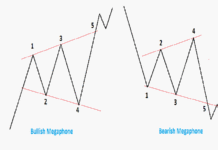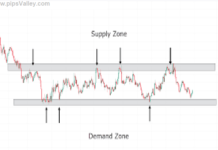
The XAUUSD pair represents the exchange rate between gold (XAU) and the US dollar (USD). In this currency pair, XAU stands for the chemical symbol of gold, while USD represents the United States dollar. This pairing is commonly used in the financial markets to track the value of gold against the US dollar.
Gold has been a traditional safe-haven asset, often sought by investors during times of economic uncertainty or market turbulence. Its value can be influenced by various factors, including geopolitical events, inflation, interest rates, US Dollar index and overall market sentiment. When investors are concerned about the stability of other assets or currencies, they may shift their investments towards gold, leading to an increase in its price relative to the US dollar.
Fluctuations in the XAUUSD exchange rate can have implications for both the precious metals market and the global economy. A rising XAUUSD rate indicates that gold is becoming more valuable relative to the US dollar, potentially reflecting a lack of confidence in the dollar’s purchasing power. Conversely, a falling XAUUSD rate suggests that the dollar is gaining strength against gold.
Traders and investors closely monitor the XAUUSD pair as part of their analysis and decision-making process. Technical analysis, fundamental factors, and macroeconomic trends are all considered when predicting the future movement of this currency pair. Additionally, central bank policies, trade dynamics, and global economic conditions can significantly impact the relationship between gold and the US dollar in the XAUUSD pair.
XAUUSD (Gold/US Dollar), general overview of factors that traders often consider when analyzing this trading pair:
Supply and Demand Dynamics:
Gold (xauusd analysis) is considered a safe-haven asset and tends to rise during times of economic uncertainty or geopolitical tensions. Traders analyze global economic indicators, political developments, and central bank actions to assess the potential impact on the supply and demand for gold.
US Dollar Strength:
The US Dollar and gold (xauusd analysis) often have an inverse relationship. When the US Dollar strengthens, the price of gold may decrease, and vice versa. Traders monitor factors affecting the US Dollar’s strength, such as interest rate decisions, economic data, and market sentiment.
Interest Rates:
Gold, which doesn’t yield interest, can become less attractive when interest rates are high, as other interest-bearing assets may offer better returns. Central bank decisions and interest rate trends are crucial for traders analyzing the XAUUSD pair.
Technical Analysis:
Traders often use technical indicators and chart patterns to identify trends and potential entry/exit points. Common technical tools include moving averages, RSI (Relative Strength Index), MACD (Moving Average Convergence Divergence), and Fibonacci retracement levels.
Market Sentiment:
Traders assess market sentiment through news, social media, and economic reports to gauge how investors perceive the global economic and geopolitical landscape. Sentiment can strongly influence short-term price movements.
Global Economic Conditions:
Gold is influenced by global economic conditions, including inflation rates, GDP growth, and trade balances. These factors can impact investor confidence and the perceived value of gold.
Geo-Political Events:
Geopolitical events such as wars, conflicts, and major policy changes can impact the demand for safe-haven assets like gold.
Market Speculation:
The speculative nature of financial markets means that sentiment and positioning can lead to short-term price swings. Traders often react to news and events even before their full implications are understood.
It’s essential to remember that trading carries inherent risks, and past performance is not indicative of future results. If you’re actively trading XAU/USD or any other financial instrument, make sure to conduct thorough research, consider a variety of factors, and implement proper risk management strategies. For up-to-date analysis and information, consult reputable financial news sources, market analysis platforms, and seek advice from qualified financial professionals. Xauusd analysis today’s overview as follows:
- The rally was sold and the dip bought resulting in mild net losses yesterday.
- Intraday, and we are between bespoke support and resistance 1886-1932.
- Immediate signals are hard to interpret.
- Rallies continue to attract sellers.
- The medium term bias remains bearish.
Recommendations: Sell Limit @ 1930-1932 area, Take Profit: 1912/1904
Related Post:
Profit Sharing in Forex Trading
XAUUSD Historical Data Analysis Shows Gold’s Long-Term Resilience



























